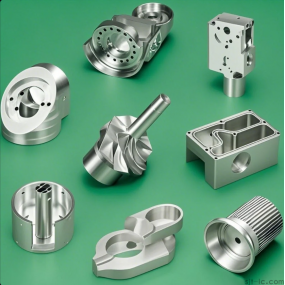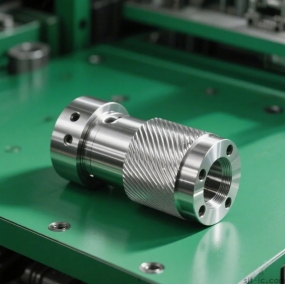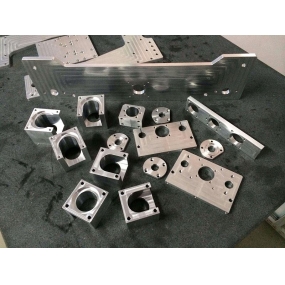The principle of horizontal five-axis machining is mainly realized through a multi-axis machining center. It includes the main components such as the bed body, worktable, spindle, tool magazine and control system. The spindle is the core component of the five-axis machining center, which has high rotational speed and can be processed at high speed. The tool magazine is responsible for storing the tools, which can be automatically changed according to the needs to adapt to different machining needs. The bed body and worktable are fixed workpieces and support structure.  In horizontal five-axis machining, the spindle and the operation table can work together. The spindle can be installed on the bed table, which is set as the operation table of the bed body of the gantry machining center. People are accurately positioned as A arc, and the working range of A axis is from + 20 degrees to -100 degrees. At the same time, the B axis can be set as the rotary axis of the operation table of the bed body, which can be rotated within the range of 360 degrees. In this way, the cooperative work of the spindle and the operation table can realize the processing of multiple sides and directions in one clamping, and improve the machining accuracy and efficiency of the parts. In addition, the structure of the horizontal five-axis machining center can also be divided into three forms: XYZ + A + B, XYZ + A + C, XYZ + B + C. Among them, XYZ represents three linear coordinate axes, and A and B represent two rotating coordinate axes. The cooperative work of these coordinate axes can complete various complex parts processing, and avoid the occurrence of tool interference, overcutting and undercutting. Overall, the principle of horizontal five-axis machining is to achieve multi-faceted and multi-directional machining through the collaborative work of multi-axis machining centers, which improves the machining accuracy and efficiency of parts. At the same time, its structure and control system also ensure the stability and flexibility of the machining process.
In horizontal five-axis machining, the spindle and the operation table can work together. The spindle can be installed on the bed table, which is set as the operation table of the bed body of the gantry machining center. People are accurately positioned as A arc, and the working range of A axis is from + 20 degrees to -100 degrees. At the same time, the B axis can be set as the rotary axis of the operation table of the bed body, which can be rotated within the range of 360 degrees. In this way, the cooperative work of the spindle and the operation table can realize the processing of multiple sides and directions in one clamping, and improve the machining accuracy and efficiency of the parts. In addition, the structure of the horizontal five-axis machining center can also be divided into three forms: XYZ + A + B, XYZ + A + C, XYZ + B + C. Among them, XYZ represents three linear coordinate axes, and A and B represent two rotating coordinate axes. The cooperative work of these coordinate axes can complete various complex parts processing, and avoid the occurrence of tool interference, overcutting and undercutting. Overall, the principle of horizontal five-axis machining is to achieve multi-faceted and multi-directional machining through the collaborative work of multi-axis machining centers, which improves the machining accuracy and efficiency of parts. At the same time, its structure and control system also ensure the stability and flexibility of the machining process.
안녕하세요! EMAR의 웹사이트에 오신 것을 환영합니다!
 Korean
Korean » »
» »
 English
English Spanish
Spanish Arabic
Arabic French
French Portuguese
Portuguese Belarusian
Belarusian Japanese
Japanese Russian
Russian Malay
Malay Icelandic
Icelandic Bulgarian
Bulgarian Azerbaijani
Azerbaijani Estonian
Estonian Irish
Irish Polish
Polish Persian
Persian Boolean
Boolean Danish
Danish German
German Filipino
Filipino Finnish
Finnish Dutch
Dutch Galician
Galician Catalan
Catalan Czech
Czech Croatian
Croatian Latin
Latin Latvian
Latvian Romanian
Romanian Maltese
Maltese Macedonian
Macedonian Norwegian
Norwegian Swedish
Swedish Serbian
Serbian Slovak
Slovak Slovenian
Slovenian Swahili
Swahili Thai
Thai Turkish
Turkish Welsh
Welsh Urdu
Urdu Ukrainian
Ukrainian Greek
Greek Hungarian
Hungarian Italian
Italian Yiddish
Yiddish Indonesian
Indonesian Vietnamese
Vietnamese Haitian Creole
Haitian Creole Spanish Basque
Spanish Basque











